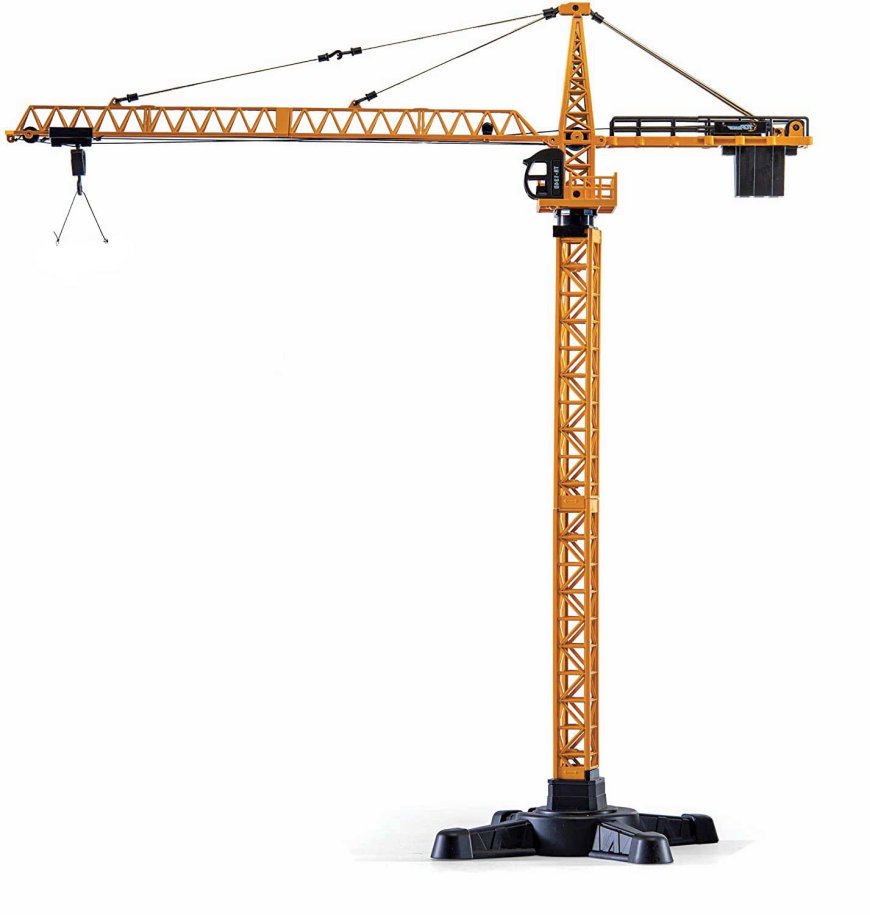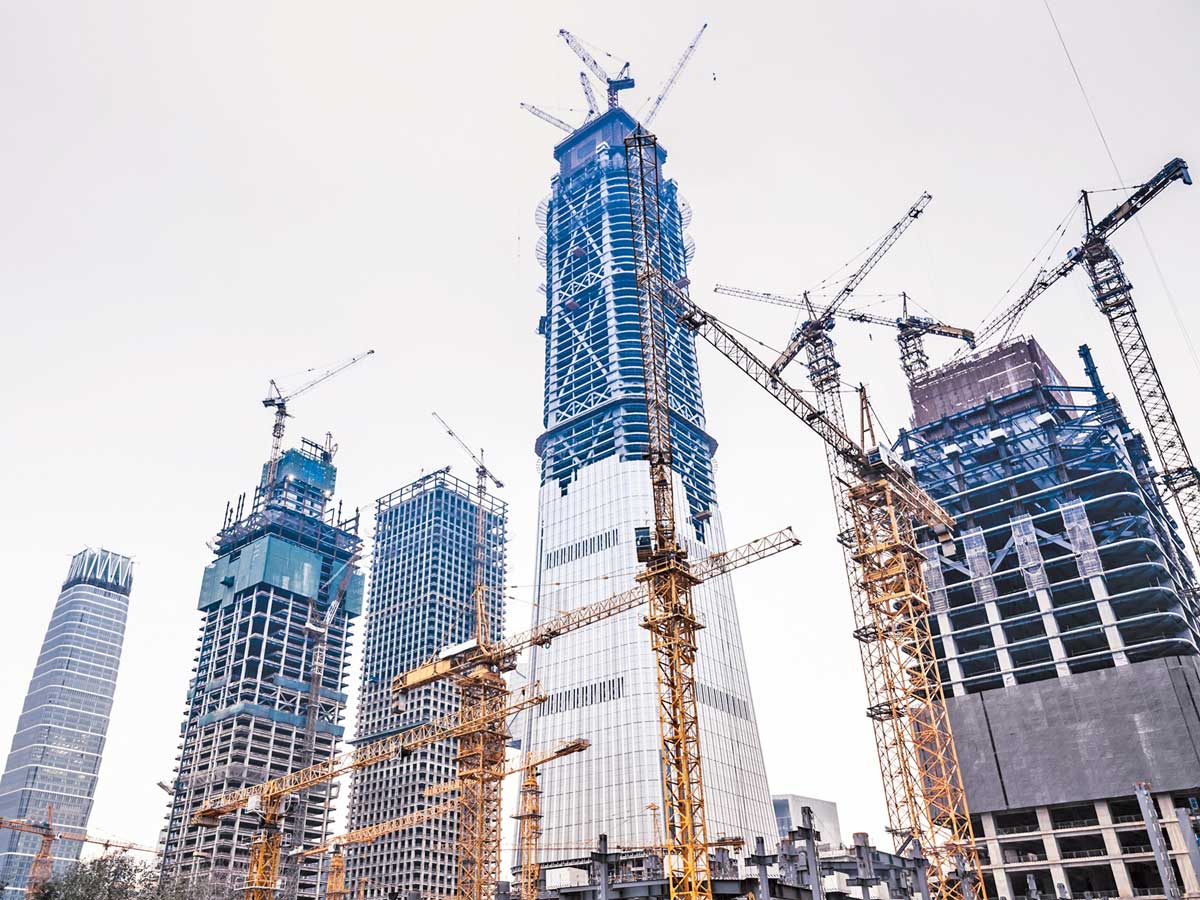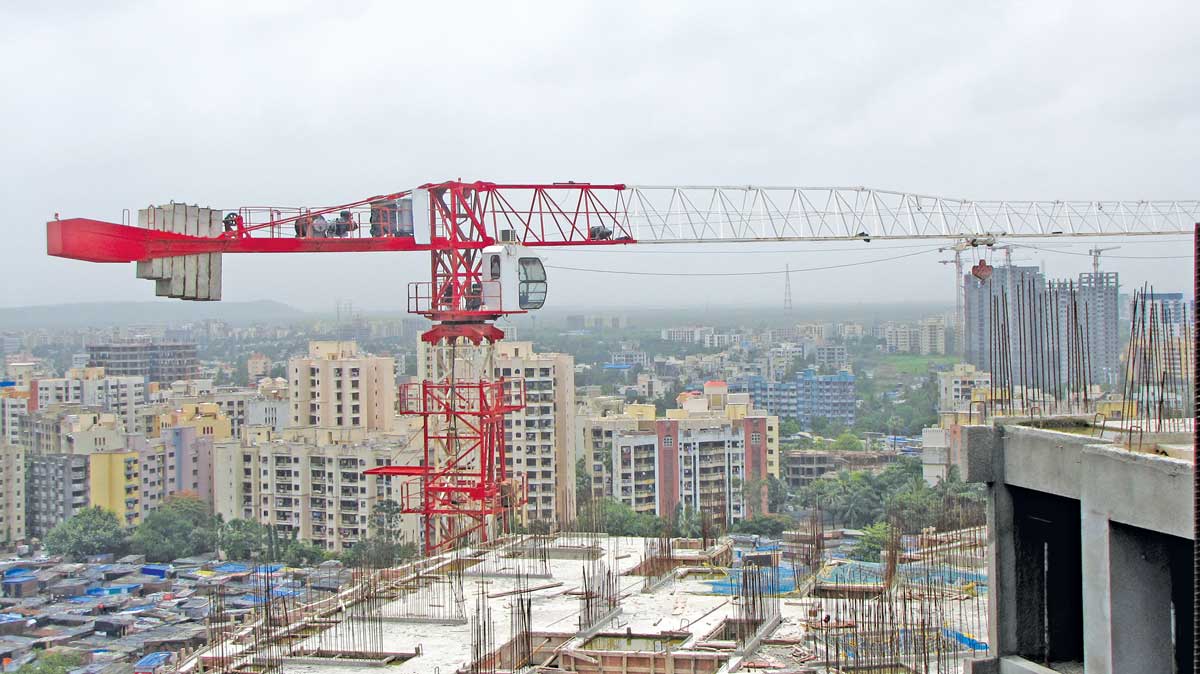TOWERING TOWARDS THE FUTURE!
Rapid urbanization, government initiatives adopted to promote the construction of smart cities and investment in infrastructural expansion of the power generation sector across underdeveloped and developing economies is favouring the growth of Tower Cranes. Equipment Times find the market dynamics

Rapid urbanization, government initiatives adopted to promote the construction of smart cities and investment in infrastructural expansion of the power generation sector across underdeveloped and developing economies is favouring the growth of Tower Cranes. Equipment Times find the market dynamics (demand-supply), technological trends, challenges and possible avenues in the Tower Cranes segment.
Increasing construction activities and development of high-rise commercial and residential structures globally are driving the tower crane market growth. Heavyweight lifting capacities of these machines as compared to other conventional options will support their usage, majorly in urban building operations. Increasing global population and rapid urbanization across the globe will create the need for efficient infrastructure facilities, residences, and buildings.
Additionally, growing infrastructure refurbishment projects and the expansion of Tier I & Tier II cities in the countries are creating a huge demand for these machines and add up to the industry demand. The industry is hindered by the unavailability of skilled and trained operators in several countries, limiting machinery utilization and increasing the cost of training and procurement for the contractors.
Tower cranes are the modern balanced cranes that consist of various basic parts. The high lifting capacity and height of tower cranes enable them to be used in construction of tall structures. A modern tower crane consists of three main sections, which include base, the tower mast and the slewing unit.
The most important features of the tower cranes are safety, reliability and user-friendliness. Tower crane rentals are available in different capacities depending on the requirement of the end-users, also there are different types of tower crane rentals available in the market such as hammer head cranes, self-erecting cranes and others.
Tower crane rental is gaining traction in the market, because many small and medium-scale developers cannot afford to buy the tower cranes. On the other hand, big players utilize it for various projects over a longer time duration in order to save the overall project cost, hence they are more likely to buy the tower cranes instead of renting it.
The Role of Tower Cranes in High-Rise Building Projects
The skyline of any city will likely include at least a few tower cranes, which are among the largest pieces of equipment used in building projects. Construction companies use tower cranes to lift heavy materials such as steel and concrete. Large devices like acetylene torches, motors and generators are also transported using tower cranes.
According to Nick Natsoulis, since tower cranes are slender compared with high-rise buildings, their lifting capacity can be easily underestimated based on appearance. How can the tower crane stand without tipping over? How is it capable of lifting so much weight? Does the crane become taller along with the building? In this article, the basic principles of tower cranes and their functionality will be discussed.
Tower Crane Parts
Tower cranes in general are composed of three main parts: the base, the mast or tower, and the slewing unit.
BASE: The base is the main support of the crane. It is connected to a large concrete foundation that carries the entire weight.
MAST OR TOWER: The mast is connected to the base, and it is the supporting structure that gives the crane its height. The mast has a large triangulated lattice structure, which gives the crane its strength.
SLEWING UNIT: The slewing unit consists of a gear and motor, attached to the top of the mast, allowing the crane to rotate along its axis. In turn, the slewing unit consists of three parts:
Jib or working arm: A horizontal element that carries the load, with a trolley that runs along its length to move the load in and out.
Machinery arm: A shorter horizontal element that holds the load-lifting motor. It also contains electronic controls, the cable drum, and concrete counterweights to keep balance.
Operator’s cabin: Consists of the space in which the operator handles all the functions of the crane.
Tower Crane Specifications
A typical tower crane has the following specifications, but note there are differences depending on the model and manufacturer:
Maximum unsupported height: 265 feet or 80 meters. It can reach taller if attached into the building, since the building rises around the crane.
- Maximum reach: 230 feet or 70 meters
- Maximum lifting power: 19.8 tons or 18 metric tons
- Counterweights: 20 tons or 16.3 metric tons
Note that the maximum load is 18 metric tons, but the crane cannot lift that much weight when the load is positioned at the end of the jib. The closer the load is located to the mast, the more weight the crane can lift safely. Operators have two limit switches to prevent overloading: a maximum load switch to stay below 18 metric tons, and a maximum moment switch to protect the crane from the load’s bending force.
Weather monitoring in construction sites is important, but especially when tower cranes are used. A strong gust of wind can destabilize the load and structure, causing a collapse. Project managers should constantly check weather forecasts, and avoid lifting operations with unfavorable weather. A weather monitoring system at the project sites can warn about dangerous wind conditions that are not covered in forecasts.
Tower Crane Support System
One of the first questions that may be asked by someone looking at a tower crane is these structures stand upright. There are several elements that contribute to the tower crane’s stability. The concrete pad is a concrete foundation made by the construction company several weeks prior to the crane’s arrival. Typical measurements for the pad are 30x30x4 feet (10x10x1.3 meters), with a weight of around 400,000 pounds. Large anchor bolts are deeply embedded in the concrete pad, and these elements support the base of the crane.
Tower cranes are delivered to construction projects in parts, which are then assembled on-site. Qualified installers assemble the jib and the machinery section, these horizontal elements are then positioned on the mast, which is only 40 feet tall initially. Once this assembly is completed, the counterweights are placed by a mobile crane. The mast rises from the concrete pad, and it remains upright thanks to its triangulated structure. To increase the crane height, the crew adds sections to the mast with a climbing frame:
A weight is hung on the jib to balance the counterweight.
The slewing unit is detached from the top of the mast and hydraulic rams in the top climber push the slewing unit up 20 feet.
The crane operator uses the crane to lift another 20 ft mast section into the gap and then it is bolted in place.
These steps are repeated continuously until the desired height is achieved. Once it is time to remove the tower crane from the construction site, the crane disassembles its own mast and smaller cranes are used to disassemble the rest.
Flat-Top Tower Cranes
The flat-top tower cranes are gaining demand due to the safety and easy handling features in newly developed machines. The flat-top models offer easy and fast erection as compared to other models due to fewer jib interferences, leading to huge cost savings. These machines are suitable for multi-crane worksites and application areas with height restrictions. These cranes can be easily dismantled and will reduce interference in cases of overflying cranes. The utilization of these models will also limit the cost of procuring several cranes at various construction and mining sites. The flat-top models find applications in congested worksites such as airports, power plants, etc., further contributing to industry growth.
Top Slewing Cranes
Top slewing cranes are witnessing increasing demand due to their suitability for medium to high-rise building projects and longer duration needs. These cranes have stationary features and rest on structural & steel bases, providing stability in weightlifting operations.
According to gminsights.com, growing needs to transfer heavy loads from one place to the other in utility & construction applications are increasing the demand for top slewing models, further developing the tower crane market. Several manufacturers in the industry are working on improving the machinery features and have developed various models that include top-slewing crane features. For instance, in December 2018, Manitowoc announced the launch of its new internal mast operator model for the top slewing category. The company’s new lift allows elevator access and simultaneous ladder and meets the French design regulations.
Lifting Capacity
In the tower crane market, the 6 to 20 metric tons segment is anticipated to grow. The segment is gaining traction owing to the availability of flat-top, hammerhead, and luffing jib machines with these specifications. These are the medium-range machines that can lift loads ranging from 6 to 20 metric tons. Several load handling and transporting operations in the oil and gas and energy sector is adding up to the demand for these machines. Various technical specifications, reduced pollution levels, and enhanced software integrated features are supporting high machinery utilization, further driving the growth of this equipment.
The rapid expansion of the real-estate sector in the country and the emergence of high-end infrastructure projects across several cities are supporting the utilization of tower crane market products. In the global construction industry, these machines are becoming popular due to the ability to work efficiently at high-rise building sites, reports gminsights.com. Additionally, to address the growing construction and infrastructure demand, machine manufacturers are offering specific distributor allocation and customer specific product mix. Efficient customer support and the provision of capacity-specific products by manufacturers are fostering the growth of construction applications in the tower crane market. These machines find applications in the construction of dams, bridges, and other public and private infrastructure facilities.
Competitive Market
The tower crane segment is highly competitive due to the presence of major construction and industrial equipment manufacturers across the globe. The industry is witnessing the requirement for more models with heavy lifting capacities and the ability to work in confined work sites. This is creating pressure for new product development strategies for manufacturers. The machinery providers are working on enhancing the crane specifications and ensuring integration of more safety features to provide worker and public safety. Moreover, the industry is also witnessing a huge demand for rental models owing to the high equipment cost and the unavailability of several machines with a single contractor.
Technology
The key design elements of tower cranes have remained largely unchanged for many decades. With proper maintenance and repair, they can have a long lifespan – so cranes have not typically been at the forefront of innovation in the construction industry.
In recent years however, changes in the construction sector and increasing improvements in health and safety have driven innovation in tower crane technology. This has resulted in higher levels of safety as well as better productivity and the ability to work in more challenging environments.
Cab design
Cab features include improved seat position and access, a USB port, and optional Bluetooth. A user-friendly multifunction touch screen emits warning lights and sounds, as well as controls the interior temperature, interior, and exterior lighting, and other features. Sunblinds are provided for the side and front windows, and for the roof window on luffing jib cranes.
According to gruasyaparejos.com, cranes with a horizontal or tilting boom, with a height under a hook equal to or greater than 35 m above the level of support, must have a cabin secured to the vertical rotating structure of the crane. (Except for cranes manufactured before 1990, which have a fixed cabin inside the structure).
Operator location: The cabin must be designed so that the operator can control all the maneuvers from his work station, without having to place himself in a position of risk; The dimensions of this should be adequate to allow comfortable driving and correct visibility from the seat.
The interior height of the cabin must not be less than 1.90 m; the roof smooth and free of protruding elements. The windows must be constructed with glass or equivalent material, security. The front window must be equipped with a windshield wiper.
The cabins must comply with the ventilation requirements established in the current regulations. In the event that the crane is powered by an internal combustion engine, the necessary measures must be taken to prevent the exhaust gases from contaminating the cabin.
The control devices must remain visible in all circumstances. Exceptions are those cranes in which, for security reasons, it is advisable for the operator to be located in another place and the cranes commanded by remote control, from an operation station.
Cranes that are exempt from having a cabin, must have an operation position consisting of a platform, whose minimum dimensions are 1.50 max 1.50 m, also with a guardrail of 1 m minimum height.
The operation position can be located in the cabin, on the platform, or outside the crane, provided that it has good visibility, is easily accessible, is not reached by any mobile part of the crane, nor is there the possibility that it falls. Some elements from higher levels, reports gruasyaparejos.com.
Safety Regulations For Cranes
Involves people, property and property, that is why it is essential to comply with certain safety regulations related mainly to the automatic safety systems that the crane has, with the correct maintenance of its parts, with the conditions of operation in the workplace and with the staff that works with them.
The most common accidents are caused by imprudent actions or ignorance of the people involved in its assembly, maintenance or operation.
Crane inspection: It is essential to have a program of inspections and preventive maintenance plan very rigid because any accident that occurs can strongly affect the productivity of the works where these cranes are used.
It is recommended that the inspections be carried out periodically by the crane operator or a supervisor, before beginning the workday. These must be carried out exhaustively and oriented to find faults in the most visible elements.
Tower crane safety devices
The safety in the handling of a tower crane depends both on its installation and maintenance conditions and on the good use or handling of the same.
The safety mechanisms of a crane must be periodically checked and kept in optimal conditions, this will be the only way to preserve both the life of people and the machine.
Challenges in the Tower Cranes industry…
Construction of high-rise buildings, large-scale apartment blocks, or construction in urban areas (especially busy downtowns) demands increasingly greater use of tower cranes. Therefore, the installation and dismantling of tower cranes on construction sites is an inevitable task, but also one of the most dangerous in the construction industry. Accidents during installation (including assembling and climbing) or dismantling of tower cranes incur the loss of workers’ lives as well as delays in construction schedules and/or damage to buildings under construction.
Rental service providers of tower cranes are facing various challenges in the market such as the rented tower crane requires regular maintenance and thus cost is one of the major factors restraining the growth of the global tower crane rental market.
Rental service providers are focussing on making partnerships with the tower crane manufacturers in order to meet the demand for growing construction industry. Also, service providers and distributors of tower cranes are investing in the new facilities in order to house their rental fleets. These are some of the key trends identified in the tower crane rental market.




Hits: 137








